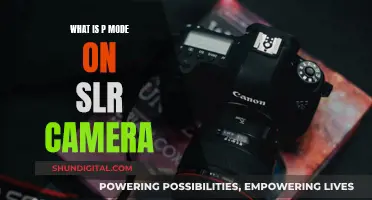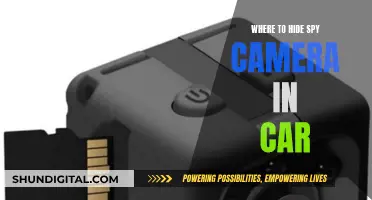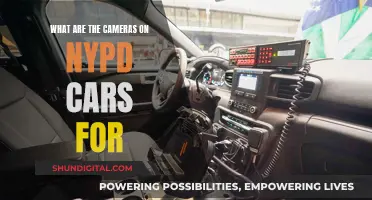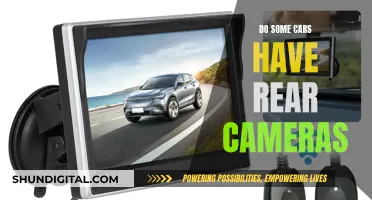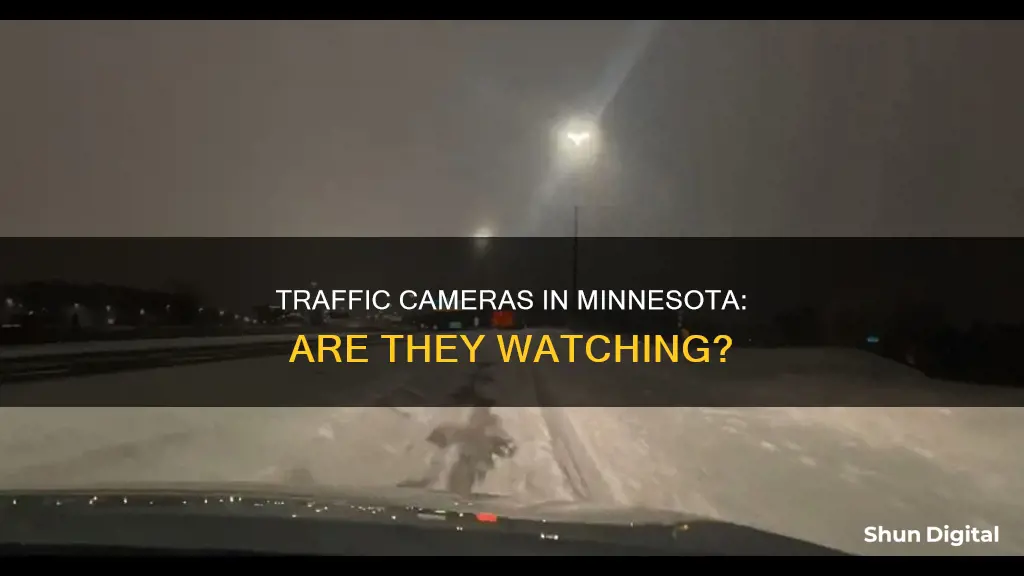
Minnesota has several traffic cameras installed across the state, with a large number in Minneapolis and its metropolitan area. These cameras are used to monitor traffic, capture accidents, and enforce traffic regulations. The state has given permission to Minneapolis and Mendota Heights to use traffic cameras for a four-year pilot project, with the primary goal of improving road safety. The cameras will be placed in high-risk locations and near schools to catch speeding and red-light-running drivers.
| Characteristics | Values |
|---|---|
| Traffic cameras in Minnesota | Yes |
| Traffic cameras in Minneapolis | Yes |
| Traffic cameras in Maple Grove | Yes |
| Traffic camera footage recorded by the State of Minnesota | No |
| Traffic camera footage available for purchase | Yes |
| Traffic camera footage used for | Vehicle accidents, liability, disputes & insurance, accident reconstruction, law enforcement, traffic research |
| Pilot project for traffic enforcement cameras | Minneapolis and Mendota Heights |
| MnDOT-supported traffic cameras | Yes |
What You'll Learn
- Minneapolis and Mendota Heights have been authorised to use traffic cameras
- Traffic cameras are used to determine fault in car crashes
- The Minnesota Department of Transportation can use cameras in highway work zones
- Traffic cameras are used by law enforcement to identify and track down suspects and witnesses
- Traffic camera footage is used for traffic research to improve safety, efficiency and behaviour management

Minneapolis and Mendota Heights have been authorised to use traffic cameras
Minneapolis, Minnesota, has a comprehensive network of traffic cameras in place, monitoring various roads and highways. These cameras provide live traffic updates and local road condition information for residents and commuters. The cameras are strategically positioned at major intersections and highways, including I-394, I-94, I-35W, and MN-100.
Mendota Heights, a city in Minnesota, has also been authorised to install and operate traffic cameras. While specific locations and the number of cameras are not currently available, the implementation of these cameras will enhance road safety and traffic management in the city.
The use of traffic cameras in Minneapolis and Mendota Heights is part of a broader initiative to improve traffic flow, monitor road conditions, and enhance public safety. These cameras provide real-time data and visuals on traffic conditions, allowing authorities to make informed decisions regarding traffic management and emergency response.
Additionally, the cameras can aid in incident detection and response. For example, if a vehicle breakdown or collision occurs, the cameras can provide immediate notification to the relevant authorities, enabling prompt assistance and reducing potential traffic disruptions. The cameras can also help in enforcing traffic regulations, identifying vehicles violating rules, and capturing evidence for further investigation and enforcement actions.
Overall, the authorisation and implementation of traffic cameras in Minneapolis and Mendota Heights demonstrate a commitment to utilising technology for improved traffic management and public safety. By leveraging these tools, both cities can enhance the efficiency of their transportation systems and better serve their residents and commuters.
Choosing the Right Car Camera: Key Considerations
You may want to see also

Traffic cameras are used to determine fault in car crashes
Minnesota has a comprehensive network of traffic cameras in place, particularly in the Minneapolis metropolitan area. These cameras are used to monitor traffic flow, road and weather conditions, and enforce traffic laws. While some cameras are only for live monitoring, many are also used to record footage, which can be invaluable in determining fault in car crashes.
Traffic cameras are often installed at intersections, traffic lights, and along roadways. They can capture different types of traffic violations, including illegal right-hand turns, failure to stop, running red lights, blocking intersections, and disobeying school bus and railroad signs. This footage can then be used as evidence to establish fault and liability in the event of a collision.
In Minnesota, there are hundreds of intersection cameras, red light cameras, and highway cameras that capture car crashes and other major incidents. While the State of Minnesota does not record this footage, private companies do. One such company, Traffic Cam Archive, has a platform that makes it easy and affordable for professionals, including law offices, insurance companies, and law enforcement, to access this footage. They currently cover Minneapolis and rural Minnesota, with plans to expand their coverage rapidly.
The use of traffic camera footage as evidence in car crash cases can be extremely beneficial in establishing fault. It provides an objective account of the events leading up to a collision, which can be crucial when witness statements are unreliable or difficult to obtain. This footage can also help expedite the reconstruction process, improve accuracy, and provide a more comprehensive understanding of the scene.
To obtain traffic camera footage after a car crash, it is essential to act quickly. The retention periods for such footage vary, with some agencies or businesses only keeping it for a few days or weeks. It is also important to determine the ownership of the camera, as the process for accessing footage differs depending on whether it is owned by a state or local agency or a private business. In most states, traffic camera footage is admissible in court and can play a pivotal role in supporting or refuting traffic violation citations.
Traffic Camera Secrets: AM 730 Camera Insights
You may want to see also

The Minnesota Department of Transportation can use cameras in highway work zones
Minnesota is home to hundreds of intersection cameras, red-light cameras, and highway cameras that record car crashes and other major incidents. The state legislature has recently greenlit a pilot project for Minneapolis and Mendota Heights to test the use of traffic enforcement cameras. The plan also authorises the Minnesota Department of Transportation (MnDOT) to use cameras in highway work zones.
The proposal, which is currently awaiting the governor's signature, would allow the use of cameras on a trial basis with several guardrails in place. For example, the proposal outlines how many cameras are allowed, how revenue from fines can be used, and how people can contest a violation. The pilot will start small, with 10 or fewer cameras, and there will be a 30-day warning period for drivers. The first offence will result in a warning, with each subsequent offence incurring a $40 ticket for speeding or running a red light. This fine doubles to $80 if the driver is going 20 miles or more over the speed limit.
The aim of the pilot is to change behaviour without being overly punitive, as a $40 fine can be effective in changing behaviour. The proposal includes several protections, such as if a car is stolen or if the driver is taking someone to the hospital due to a medical emergency. The ACLU of Minnesota has raised due process and privacy concerns about the use of these cameras, but the law sets out data privacy rules to address these concerns.
MnDOT-supported traffic cameras are located near and at MnROAD, with several cameras positioned on the mainline.
Transferring Raw Camera Files: A Step-by-Step Guide
You may want to see also

Traffic cameras are used by law enforcement to identify and track down suspects and witnesses
Minnesota does have traffic cameras, and these are used by law enforcement to identify and track down suspects and witnesses. Traffic cameras are an important tool for law enforcement agencies, as they can help to efficiently gather evidence and monitor traffic violations.
In Minnesota, there are hundreds of intersection cameras, red light cameras, and highway cameras that record footage of car crashes, accidents, and other incidents. This footage can be used to identify and locate suspects and witnesses, as well as determine fault in accidents. The cameras are often placed at intersections, highway crossings, and in specific zones such as public parks and hospitals.
The use of traffic cameras by law enforcement offers several benefits. Firstly, they provide a detailed and objective account of incidents, which can aid in investigations and help to identify suspects or persons of interest. The cameras can also assist in tracking the movement of vehicles and individuals, which can be crucial in locating suspects or witnesses. Additionally, the presence of traffic cameras can act as a deterrent for traffic violations and potentially reduce the number of accidents and injuries on the road.
However, it is important to note that the use of traffic cameras by law enforcement is not without controversy. Some people raise concerns about privacy and the potential for mass surveillance. There may also be questions about the admissibility of camera evidence in court and the potential for errors or misuse of footage. As such, it is essential to have clear guidelines and regulations regarding the use and placement of traffic cameras, as well as strict protocols for accessing and utilizing the footage.
Updating Camera Raw in Lightroom: Offline Method
You may want to see also

Traffic camera footage is used for traffic research to improve safety, efficiency and behaviour management
Minnesota has hundreds of traffic cameras, including intersection cameras, red-light cameras, and highway cameras. These cameras are not operated by the State of Minnesota but by private companies. The footage they capture is used for a variety of purposes, including traffic research to improve safety, efficiency, and behavior management.
Traffic camera footage is an invaluable resource for traffic research. In Minnesota, this footage is used to study congestion, behavior, and safety. By analyzing videos from intersection, red-light, and highway cameras, researchers can gather insights to plan and manage roadways effectively. This research aids in making informed decisions about road infrastructure and traffic management strategies, ultimately improving safety and efficiency.
Moreover, traffic camera footage plays a crucial role in accident reconstruction, providing a detailed account of incidents. It helps identify and track down suspects and witnesses, contributing to law enforcement investigations. The footage also assists in determining liability and resolving disputes and insurance claims arising from vehicle accidents.
Additionally, the large volume of data generated by traffic cameras can be leveraged using advanced technologies such as artificial intelligence and machine learning. For instance, algorithms can be trained to analyze footage and extract valuable information about traffic flow, vehicle types, and driving behavior. This enables more sophisticated traffic management systems and can inform the development of autonomous vehicles and smart cities.
In conclusion, traffic camera footage is a powerful tool for traffic research and management. It helps improve road safety, optimize traffic flow, and enhance behavior management. Minnesota's extensive network of traffic cameras, combined with the efforts of private companies to archive and provide access to footage, contributes significantly to these goals, ultimately benefiting the state's transportation system and road users.
Troubleshooting Guide: Lumix Camera Battery Won't Charge
You may want to see also
Frequently asked questions
Yes, Minnesota has traffic cameras in various locations, including Minneapolis, Mendota Heights, and Maple Grove.
Multiple entities operate traffic cameras in Minnesota, including the Minnesota Department of Transportation (MnDOT), Earth Networks, and private companies like Traffic Cam Archive.
The traffic cameras in Minnesota are used for various purposes, including monitoring live traffic and road conditions, enforcing speed limits and red-light violations, and capturing footage for accident investigation and reconstruction.
Yes, there have been privacy and due process concerns raised by organizations like the ACLU of Minnesota regarding the use of traffic cameras for enforcement purposes. However, the legislation authorizing the use of traffic cameras includes data privacy rules and protections for vehicle owners.
Yes, in Minnesota, you can access and purchase traffic camera footage through platforms like Traffic Cam Archive, which captures, catalogs, and archives high-quality traffic camera footage from various locations in the state.



